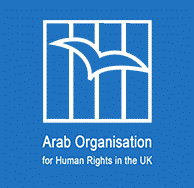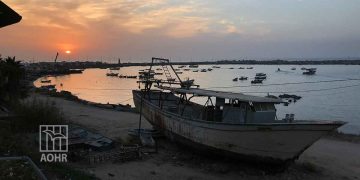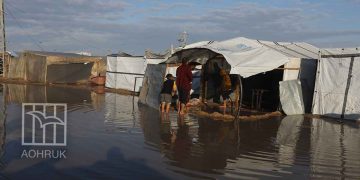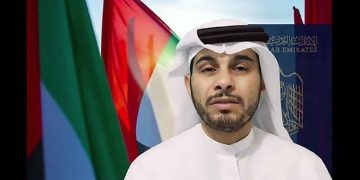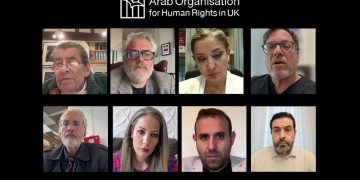On Thursday, August 8, 2024, Arab Organisation for Human Rights in the UK held a deeply impactful webinar titled “Returning from Gaza: Doctors Witness to the Crisis.” This event brought together a group of distinguished doctors who had recently served in Gaza during and after the onset of the genocide in October 2023. Each doctor shared their harrowing experiences, providing firsthand accounts of the humanitarian crisis, the collapse of the health sector, and the resilience of the medical staff and patients amidst the devastation. Their testimonies offered a stark and unfiltered look at the ongoing tragedy in Gaza, highlighting the dire conditions and the unprecedented challenges faced by the medical community.
Dr. Amjad Alsherif, a thoracic surgeon, provided a harrowing account of his experiences in the northern part of Gaza, where he visited twice—once in March and again in July 2024, with his most recent departure on August 1st. He was deeply moved by the resilience of the 700,000 people, including medical professionals, who chose to remain in the north despite the overwhelming challenges. Dr. Alsherif described the north as a “totally different world” compared to the south, noting that the region was a disaster zone, with the population enduring extreme hardships. Despite the dire conditions, the local physicians exhibited extraordinary dedication, managing complex medical cases with very limited resources.
One of the most striking aspects of Dr. Alsherif’s testimony was his account of the severe famine affecting not only the general public but also the medical staff. He observed that most people, including doctors and nurses, had lost between 25 to 30 kilograms due to the lack of food, water, and electricity. For three months, there was virtually no access to these essentials, and the arrival of canned food only slightly alleviated the widespread malnutrition. Dr. Alsherif recounted seeing malnourished patients arriving at the emergency room in shocking conditions, such as one patient with a sodium level of 178—a condition so extreme that it was unheard of in medical textbooks.
Dr. Alsherif also described the brutal sniper attacks targeting children, many of whom suffered severe thoracic injuries. As a thoracic surgeon, he primarily dealt with patients ranging from four to 35 years old, with 70% of them being children. These young patients often presented with complex conditions like emphysemas and fibrothorax, with chest tubes left in for months, leading to infections with bacteria like Klebsiella and Pseudomonas. The lack of antibiotics and insulin further complicated the situation, with amputations becoming a daily occurrence due to the inability to treat diabetic complications properly. Dr. Alsherif highlighted the miraculous survival of some patients, including a 12-year-old girl with a traumatic brain injury, who, against all odds, survived after six months of waiting for surgery—a testament to the extraordinary efforts of the medical staff in such an unforgiving environment.
Dr. Jeremy Hickey, who served at the European Gaza Hospital (EGH) and later at Shuhada Al-Aqsa Hospital, provided a detailed account of his experiences working in the southern region of Gaza. He arrived in Gaza in mid-June 2024, intending to work at EGH, located near the border between Rafah and Khan Yunis. However, due to the rapidly deteriorating security situation, his team was evacuated from EGH and relocated to Shuhada Al-Aqsa Hospital. Despite the relocation, the challenges remained immense, with both hospitals struggling to cope with the influx of patients and the severe lack of resources.
In the south, while the food shortages were not as severe as in the north, Dr. Hickey noted that the nutritional base was still extremely limited. The population relied heavily on grains and carbohydrates, with little access to protein-rich foods. Dr. Hickey recounted that during his stay, shipments of frozen chicken arrived for the first time in two months, highlighting the severe food scarcity. Even during Eid al-Adha, a time traditionally associated with the sacrifice and consumption of meat, the people of Gaza were unable to access meat due to the exorbitant cost, with a single animal costing around $2,000. This lack of proper nutrition further weakened the population, making them more susceptible to illness.
Dr. Hickey also highlighted the dire state of sanitation and hygiene at EGH, which was severely compromised due to overcrowding and a lack of cleaning supplies. The hospital, seen as a haven because it had not been directly attacked, was inundated with displaced people, adding immense pressure on its facilities. He described the frequent sewage spills that created pools of waste near critical areas like the intensive care unit, leading to outbreaks of diseases such as hepatitis A. The situation was exacerbated by the presence of flies in the operating theatres, and the inconsistent availability of sterile drapes and gowns, which made maintaining a sterile environment nearly impossible. Dr. Hickey emphasised the tragic reality of treating patients with multiple severe injuries, particularly children, who were disproportionately affected by the war. The inability to maintain proper sanitation and the limited medical supplies led to a high mortality rate, even among those who initially survived their injuries.
Dr. Mohammed Shalaan, an orthopaedic consultant, shared his overwhelming experience of working at the European Gaza Hospital during a period of the war. He arrived in Gaza in March 2024, at a time when the European Hospital was one of the few operational medical facilities left after the Shifa Hospital in Gaza City was rendered non-functional due to repeated Israeli attacks. Dr. Shalaan highlighted the stark contrast between the medical infrastructure in Gaza and what he was accustomed to in Ireland, where even a few polytrauma cases would strain a well-equipped hospital. In Gaza, however, the European Hospital was inundated with over 270 injured patients in a single day, all with severe and complex injuries, and the hospital had only four operating theatres to manage this overwhelming influx.
Dr. Shalaan’s testimony brought to light the extreme challenges faced by the medical staff due to the lack of medical supplies and equipment. He described how essential items, such as surgical instruments and plates for orthopaedic surgeries, were either unavailable or had to be smuggled in through Egypt, often with great difficulty. The inability to perform surgeries due to the shortage of resources led to a significant number of preventable amputations and other complications. Dr. Shalaan was particularly shocked by the environment inside the hospital, where patients and their families lived in overcrowded conditions, with people sleeping in corridors and on stairs. This overcrowding not only compromised the safety and hygiene of the patients but also increased the risk of infections, especially in cases involving open fractures.
Dr. Shalaan also emphasised the disproportionate impact of the war on women and children, who made up 70% of the patients he treated. Most of these patients were injured in their own homes, often by drone strikes, highlighting the indiscriminate nature of the violence. Dr. Shalaan was struck by the sheer number of civilian casualties, with no signs of these individuals being involved in any military activities. He also noted the severe malnutrition among the population, including the medical staff, who were themselves struggling with the lack of food and basic necessities. Dr. Shalaan’s own experience of losing nine kilograms during his two-and-a-half-week stay in Gaza underscored the extreme conditions under which the people of Gaza were living, with no access to clean water, adequate food, or proper sanitation.
Dr. Sarah Badran, a paediatric interventional cardiologist, offered a poignant perspective on the less visible but equally devastating aspects of the humanitarian crisis in Gaza. She spent the first three weeks of May 2024 in Gaza, where she witnessed the daily struggles of the population, particularly the children. Dr. Badran highlighted the lack of basic necessities that are often overlooked, such as shoes, hygiene products, and medical supplies for chronic conditions. She observed that many children were without proper footwear, and basic items like baby formula and feminine hygiene products were in critically short supply. These shortages, combined with the constant displacement and poor living conditions, exacerbated the suffering of the population.
Dr. Badran was deeply affected by the hopelessness she observed among the people, especially the young. She recounted the stories of children whose lives had been completely upended, such as those who were on the verge of completing their education but found their schools destroyed and their futures uncertain. The devastation was not just physical but also psychological, with the people of Gaza showing remarkable resilience despite the dire circumstances. Dr. Badran noted the disconnect between the outward expressions of strength and the underlying despair, as people tried to maintain a sense of normalcy and dignity in the face of overwhelming adversity. The children, in particular, were struggling to cope with the loss of their homes, schools, and even their basic rights to health and education.
In addition to the direct impacts of violence, Dr. Badran highlighted the devastating effects of the lack of care for chronic diseases. She spoke of children dying from conditions that should be easily treatable, such as asthma and diabetes, due to the unavailability of essential medications like insulin. The lack of proper medical testing further complicated the situation, as doctors were unable to diagnose and treat conditions effectively. For example, there was a significant increase in cases of hepatitis among children, but the cause remained unclear due to the inability to conduct proper tests. Dr. Badran emphasised that these deaths were preventable, making them all the more tragic. She concluded by reflecting on the broader implications of the crisis, noting that the destruction of Gaza’s health and education systems would have long-lasting effects on the future of its children.
Dr. Mohamad Abdelfattah, an adult intensive care unit physician, provided a detailed and distressing account of his time at the European Gaza Hospital in early May 2024. He emphasised that the war on Gaza was, in essence, a war on children. During his time in the intensive care unit, he witnessed a large number of pediatric patients with horrific injuries, including severe burns, multiple amputations, and life-threatening wounds caused by shrapnel and explosives. The severity of these injuries was compounded by the lack of essential medical supplies and the spread of resistant bacteria, which made infection control nearly impossible. Dr. Abdelfattah noted that in any other setting, these patients might have had a chance of survival, but in Gaza, many succumbed to their injuries within 24 to 48 hours.
The lack of basic hygiene and sanitation in the ICU exacerbated the situation. Dr. Abdelfattah described the appalling conditions in which the medical staff had to work, with no hand sanitizers or soap available to maintain cleanliness. The presence of flies in the ICU further contributed to the spread of infections, particularly among burn victims who required frequent dressing changes. The limited availability of sterile supplies and the overwhelming number of patients made it impossible to provide the level of care required to prevent infections. As a result, many children who survived the initial trauma died from infections that could have been prevented under normal circumstances.
Dr. Abdelfattah also highlighted the broader impact of the war on Gaza’s children, noting that the majority of the victims were children who had been out of school for ten months and were living in makeshift shelters within the hospital grounds. These children were malnourished, barefoot, and deprived of basic necessities, with no routine or semblance of normal life. The psychological trauma of living in such conditions, combined with the physical injuries they sustained, would have long-lasting effects on their development and well-being. Dr. Abdelfattah emphasised that the crisis in Gaza was not just a medical emergency but a humanitarian disaster that would leave a lasting scar on an entire generation of children.
Dr. Ahmed Elsayed, a thoracic surgeon, delivered a powerful and emotional testimony about the dire conditions in Gaza and the immense challenges faced by medical professionals. He expressed his deep frustration with the lack of resources and the overwhelming number of critically injured patients he encountered during his time in Gaza. Dr. Elsayed described the tragic case of a young girl who was shot by a sniper, resulting in quadriplegia. Due to the absence of necessary medical equipment, such as fixation rods, there was little hope for her recovery, and she was expected to suffer a slow and painful death. This case, among many others, underscored the severe limitations of the medical infrastructure in Gaza, where even the most basic supplies were often unavailable.
Dr. Elsayed also recounted the extreme measures he and his colleagues had to take to treat patients with life-threatening injuries. With no proper surgical supplies, they were forced to improvise, using makeshift tools to perform life-saving procedures. Despite their best efforts, many patients died in agony due to the lack of adequate medical care. Dr. Elsayed described the emotional toll of witnessing so many preventable deaths, particularly among young patients who had their whole lives ahead of them. He criticised the international community for ignoring the plight of the people of Gaza, drawing a stark comparison between the treatment of civilians and the dehumanizing conditions they were forced to endure.
In his testimony, Dr. Elsayed also highlighted the broader ethical implications of the war, questioning the morality of a world that allows such atrocities to occur. He pointed out the hypocrisy of the international community, which often speaks of human rights but fails to act when it comes to protecting the people of Gaza. Dr. Elsayed’s testimony was a poignant reminder of the human cost of the war and the failure of the global community to intervene effectively. His words conveyed not only the physical suffering of the people in Gaza but also the deep sense of abandonment they feel, as the world turns a blind eye to their suffering.
Dr. Zouhair Lahna, an OBGYN with extensive experience in conflict zones, provided a sobering account of his multiple trips to Gaza, where he witnessed the extreme conditions faced by women and children. He emphasised that Gaza is unlike any other conflict zone he has worked in, noting that the people there have no escape from the violence and destruction. Dr. Lahna described the severe health crisis in Gaza, where women and newborns were dying from preventable conditions due to the lack of medical supplies and proper care. He highlighted the high rates of septicemia in women and hypothermia in newborns during the winter months, conditions that would be easily treatable in any other part of the world but were often fatal in Gaza due to the dire conditions.
Dr. Lahna also reflected on the broader implications of the crisis, noting that the ongoing siege and systematic destruction of Gaza’s infrastructure have created a situation where even the most basic human rights are denied. He described how the medical staff, who themselves live in conditions akin to homelessness, continue to show remarkable resilience in the face of unimaginable challenges. Despite the lack of resources and the constant threat of violence, these doctors and nurses strive to provide care to their patients, often working under conditions that would be considered inhumane anywhere else in the world. Dr. Lahna emphasised that the situation in Gaza is not just a medical crisis but a violation of the fundamental human rights of its people.
In his testimony, Dr. Lahna also raised important ethical questions about the role of international medical teams in Gaza. He expressed his concern that their presence might be used by the Israeli government to project a false image of humanitarian aid being allowed into Gaza, while in reality, the situation is far from adequate. Dr. Lahna’s experiences in other conflict zones, such as Syria and Yemen, where patients could sometimes escape to safer areas, contrasted sharply with the situation in Gaza, where the people are trapped with no way out. He concluded by stressing the need for the international community to recognise the unique and dire situation in Gaza and to take concrete actions to support its people.
Dr. Junaid Sultan, a vascular surgeon, provided a detailed and disturbing account of his experiences in Gaza during April 2024. He emphasised the systematic targeting of civilians by snipers, particularly focusing on injuries to major blood vessels. Dr. Sultan described the devastating impact of sniper attacks aimed at specific parts of the body, such as the superficial femoral arteries in the thighs. These targeted attacks caused severe damage to the neurovascular bundles, rendering the limbs of many patients useless even if they survived the initial injury. The lack of antibiotics and other essential medical supplies further complicated the situation, leading to high rates of amputations and other long-term disabilities.
Dr. Sultan also highlighted the disproportionate number of children among the victims, noting that he removed bullets from the groins of children as young as six to eight years old. These bullets, designed to explode upon impact, caused extensive damage to the surrounding tissues, making it nearly impossible to save the limbs of these young patients. Dr. Sultan was deeply troubled by the intentional nature of these attacks, which seemed designed to cause maximum harm to the civilian population. He also noted the complete lack of rehabilitation services for the many amputees, including children, who were left with no support or resources to help them adapt to their new reality.
In addition to the direct impacts of the violence, Dr. Sultan described the broader strategy of using healthcare infrastructure as a target in the war. He observed that the destruction of hospitals and the targeting of healthcare workers were deliberate tactics used to increase the suffering of the local population. This approach not only caused immediate harm but also had long-term effects on the health and well-being of the community, as people with chronic conditions or less severe injuries were unable to receive the care they needed. Dr. Sultan’s testimony underscored the extent to which the war in Gaza is being waged not just on the battlefield but through the systematic destruction of the very institutions meant to protect and care for the population.
Dr. Mark Perlmutter, a hand surgeon, shared his experience of working in Gaza during March and April 2024, where he witnessed the deliberate targeting of healthcare workers and children. He recounted the fear and uncertainty that accompanied his work, particularly after the World Central Kitchen team was targeted and killed by Israeli forces. Dr. Perlmutter described how he contacted various U.S. officials, including Senator Chuck Schumer’s office, to express his concerns, but received no response. This lack of protection for healthcare workers, despite the deconfliction process, highlighted the dangerous and precarious conditions under which they were operating.
Dr. Perlmutter was struck by the disproportionate number of children and healthcare workers who were targeted during his time in Gaza. He noted that children often arrived at the European Gaza Hospital with multiple gunshot wounds, clearly indicating that they had been deliberately targeted by snipers. These injuries were not accidental, and the repeated nature of the attacks suggested a systematic effort to inflict harm on the most vulnerable members of the population. Dr. Perlmutter’s experience of treating these young patients, many of whom did not survive, underscored the brutality of the war and the challenges faced by medical professionals in providing care under such conditions.
In his testimony, Dr. Perlmutter also emphasised the need for doctors and other medical professionals to take on the role of journalists, given that many independent journalists were either killed, expelled, or otherwise silenced during the war. He argued that it was the responsibility of those who witnessed the atrocities to share their stories with the world, as they were often the only ones with firsthand knowledge of the situation on the ground. Dr. Perlmutter urged his colleagues to use their platforms to expose the truth about what was happening in Gaza, to advocate for the victims, and to hold those responsible accountable. His call to action highlighted the critical role that medical professionals can play in raising awareness and driving change in the face of humanitarian crises.
